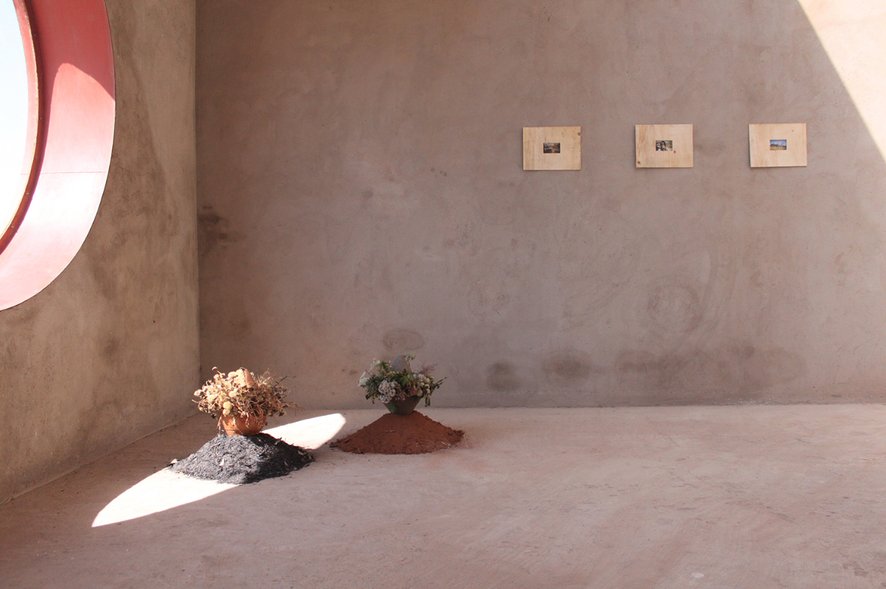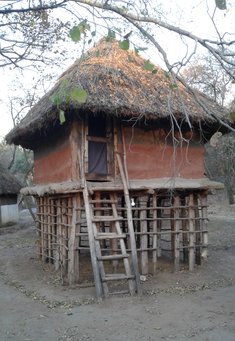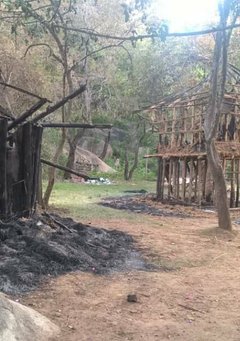ANDREA ABBATANGELO
Press
THE SHADOW OF DREAM
PAVILION OF UKRAINE AT THE 58TH INTERNATIONAL ART EXHIBITION – LA BIENNALE DI VENEZIA
Pavilion of Ukraine at the 58th International Art Exhibition – La Biennale di Venezia – will present the project entitled The Shadow of Dream* cast upon Giardini della Biennale devoted to rethinking the notion of myth and its significance and influence on contemporary art.
For the full duration of the biennale there will be performances in the pavilion based on the myth of the flight of the world’s largest cargo aircraft over Venice on May 9th at noon. The An-225 Mriya*, (Ukrainian: “dream”), will cast its shadow over the Giardini della Biennale.
As stated by Open Group (curator): “Such histories inflect our experience as Ukrainian artists, however they do not wholly define us. The story of the shadow of the Dream passing over the Giardini della Biennale may pass into myth via retellings in the pavilion and the media, but we consider this to be constituent of the dynamic corpus of our curatorial proposition”.
*Designed in Kyiv by the Antonov Design Bureau. Intended primarily to transport cargo for the Soviet space program, including multiple-launch Buran spacecrafts and components for Soviet Energia rockets. With a maximum takeoff weight of 640 tons, it is largest and the heaviest aircraft in the world.
PAVILION OF UKRAINE AT THE 58TH INTERNATIONAL ART EXHIBITION – LA BIENNALE DI VENEZIA
MAY 11 THROUGH NOVEMBER 24, 2019
CURATORIAL TEXT:
HOW CAN YOU DREAM?
WHEN CAN YOU DREAM?
WHO CAN DREAM?
THE GARDENS NEED CARE.
The plane Dream will fly over the Giardini della Biennale but it will not cast a shadow.It is unclear what will happen in the Giardini on that day, and fortunately, no one knows this. The sun rises over the Giardini della Biennale. And the tired security guard stands in the middle of the garden. The curator of the Biennale tells someone nearby that he isn’t tired at all.
When we are told that it is necessary to dream, we agree. But all too often we are told that dreaming is also expensive, irrational, not for now. What place does a real, audacious dream have in this new world? Should everything continue being subordinated to what Alain Badiou calls the “combination of obedience before what is necessary and negative will”? Or can a country in a deep economic crisis and an open military conflict dream (of a shadow over the Giardini della Biennale)? Can this country allow itself to think about spending 300,000 euros on two minutes of shadow over the Giardini della Biennale? Where is the dream stopped and where does it stop itself? And if the threshold of politics or economics can yet be overcome, then does the project cross the threshold of the ethics of an ecological crisis? Where, at what stage, does the dream about Dream and its shadow crash into ordinary bureaucracy, pragmatism, the rational use of resources and the ethics of the 21st century?
But what does the Biennale have to do with this? Why this flight? Is it perhaps worth defining what a dream is in this context? The Giardini della Biennale? The Biennale as a celebration of the Western market art? Is there in fact something greater beyond it, some banal, funny yet sensitive attachment to the global professional community with all its advantages and disadvantages? We simultaneously ask ourselves if the Biennale was really the dream for artists in the Soviet Union. Maybe it is only now, to us descendants, after the fact, that it seems like being excluded from the community of our colleagues in the West is experienced in different ways, sometimes traumatically, sometimes on the contrary. Yet it seems like it was precisely this period of isolation that created the peculiar face of the culture we grew up in. These different generations, teachers and students, conformists and outsiders, created a very particular community in Ukraine, a community that still cannot delineate itself and within which dialogs occur in fragments and snippets since they always start from different beliefs in different myths, yet still come from a single, branching mythology.
Almost two months ago we announced an open call for all who wanted to take part in an unjuried Ukrainian pavilion at the 58th Venice Biennale. We appealed to Ukrainian artists as to a single, yet “imagined community” and at the same time to every individual who felt marginalized from the process or vice versa. We invited them to take part in the project irrespective of technique, idea, education, or age. Perhaps this was an attempt to again “imagine the community itself” where “everyone” is an artist — it is a demonstration of presence, a meeting, a march on Venice. We employ a rhetoric at the level of a mayor of a city: “all artists”, “Dream”, “Flight”. Our choice of symbols can be found on mildewy posters from the nineties in this young, post-Soviet republic, in the description of some sort of regional festival. It is with this understanding that we approach the Venice Biennale with the dreams of provincial Ukraine. In this regard, our project is the death of professionalism, the victory of the “dark” in the sense of the uneducated, the victory of intuition and the half-sleep that remains without interpretation by a dream book, and it is even no longer entirely clear who had this dream. We are making a call to the living, assuring them that they will be there, that they will cast their shadow on the Giardini simply by filling out an application and becoming participants in the Venice Biennale and thereby accelerating the inflation of the Biennale. In the words of Joseph Brodsky, every epoch, every period, every century, if you like, appoints a main poet, one for the epoch because it’s easier that way, simpler. We are against this, we are for every story and this gesture again questions the Biennale and its politics of inclusivity/exclusivity.
In 1993, after 70 years of the Soviet Union and two years of independent Ukraine, there was an exhibition of Ukrainian artists in the Ujazdów Castle in Warsaw. For the first time, they were not artists of the socialist doctrine, but “contemporary artists”, participants of Parkomuna, so-called Ukrainian transavantgarde, different artists from the east and west of the country. Curated by Jerzy Onuch, the exhibition was called Steppes of Europe and although only faint traces of the works themselves remain online, the prophetic title was fated to become yet another term in the local mythology. In 2018, MoMA published an academic book (Art and Theory of Post-1989 Central and Eastern Europe: A Critical Anthology. Janevski, Ana, et al, 2018) on the critical art discourse in the post-Soviet space of central eastern Europe. A careful reader flipping through the end pages of this book would land on maps of the cities that the members of the research team and curators from the institution visited. Amidst all the notable capitals of central-eastern European countries (and not just capitals), a glaringly blank space appears in the place of Ukraine. It is those same steppes of Europe and just 25 years later they are totally blanketed in snow — even the capital is hidden under a thick blanket. This is not the first instance of an authoritative global institution’s exclusion of Ukrainian art, seemingly from its own context as a key community in the region. And of course the question arises: why is our legitimization by institutionally developed countries so important to us? Or, to be blunt, by the influential professional community and the global market? As an art collective and the curators of this pavilion, we make use of mythology precisely because it is the clearest and most verified thing we have. In 25 years of independence, culture has continued to exist within its own convenient and closed paradigm, thereby generating critically few points of “entry” for those who were ready to go inside. The steppes of Europe have begun to thaw from the snow, but this process is taking place, of course like everything important, through unexpected discoveries, pain, and self-acceptance, through artists’ blunders and the community’s defeats, and through creating a dream and contemplating its burning. Yet as a reminder of those who were excluded, half-manifested, or even could not dream, we decided to cast a shadow on the Giardini della Biennale to remind us of all those other shadows that fall upon it, upon the global market, and upon the entire system of the colonialism of contemporary art.
The pavilion’s final appearance acknowledges these difficulties. It is a result of both the apparent and obscured actions of five main players. The result of these complicated relationships, confrontations, and coalitions will be reflected as “a station” for the transfer of myth — the myth about the flight of Dream over the Giardini della Biennale. Performers within the pavilion, as authorized transmitters of the story of this project, will know about the exhibition the most, and will save and store a new continuation of the myth. The result of open call for all ukrainian artists became a telephone book listing 1,143 artists and art groups. In this directory, a careful reader flipping through, will encounter a connection to the artists who have submitted their information. Perhaps they are unknown to you, perhaps they are friends.
Or perhaps simply acknowledging their existence is be enough. As Waldemar Tatarchuk correctly said before: “The pavilion became a shadow of a shadow”.
Open Group
CURATOR: Open Group (Yuriy Biley, Pavlo Kovach, Stanislav Turina and Anton Varga)
PAVILION OF UKRAINE IS ORGANIZED BY THE MINISTRY OF CULTURE OF UKRAINE.
CO-ORGANIZER: Galeria Labirynt (Lublin, Poland)
INSTITUTIONAL PARTNER: National Art Museum of Ukraine
MRIYA OVER GIARDINI DELLA BIENNALE: May 9, 2019, 12:00 pm
OFFICIAL OPENING IN ARSENALE: May 9, 2019 13:00 pm
PRESS CONFERENCE IN ARSENALE: May 10, 2019 11:00 pm
LOCATION: Arsenale, Sestiere di Castello, Campiello Tana 2169/F, 30122 Venice
BRIEF BIOGRAPHICAL INFORMATION ABOUT THE CURATOR:
Open Group was established in Lviv in 2012 by 6 Ukrainian artists. The group’s structure has changed
over the years, and it presently consists of four members: Yuriy Biley, Pavlo Kovach, Stanislav Turina,
and Anton Varga. They occasionally invite other artists or activists to take part in their projects and join
the Open Group. Group members have been spearheading the creation of independent spaces, such as
Detenpyla Gallery and Еfremova26 Gallery (2013-2014) in Lviv, since 2011. Open Group won the Special
Distinction of the PinchukArtCentre Prize in 2013, and the Main Prize in 2015. Their works were featured
at the Ukrainian National Pavilion at the 56th Venice Biennale. In 2016, the Open Group curated the
show entitled Dependence Degree, Collective Practices of Young Ukrainian Artists 2000-2016 (Wrocław,
Poland). In 2017, the group’s work was presented under the aegis of the Future Generation Art Prize @
Venice 2017 (collateral events of the 57th Venice Biennale).
PRESS OFFICE: Ksenia Malykh, e-mail: press@ukrainian-pavilion.org
e-mail: ks.malykh@gmail.com tel.: +380950629473
EMERGENCY! CALL FOR SUPPORT DZIMBANHETE
Case Alert |18 December 2018
ZLHR CHALLENGES EVICTION OF COMMUNITY MEMBERS FROM SACRED HERITAGE SITE ZIMBABWE Lawyers for Human Rights (ZLHR) has petitioned the High Court seeking an order to restore occupation of land to more than 40 families and 136 children, who were forcibly evicted from a sacred heritage site last week by armed police officers. 46 adults and 136 children were left homeless on Friday 14 December 2018 after they were forcibly evicted without a court order from Nharira Hills located at Somerby just outside Harare by Zimbabwe Republic Police (ZRP) members in violation of provisions of Section 74 of the Constitution by armed ZRP members, who damaged their houses using crowbars, threw their possessions out in the open, and burnt a thatched house, which held traditional relics of the community and over $2 000 in cash which had been saved for traditional offerings. This left the evictees to sleep out in the open subject to the elements in the rainy season, as they have nowhere else to go with their families’ health set to deteriorate as they continue to sleep out in the open. In an urgent chamber application filed in the High Court, Fiona Iliff of ZLHR argued that the eviction of the Nharira community was illegal, unlawful and violated their right to freedom from arbitrary eviction enshrined in section 74 of the Constitution, their right to dignity and not to be subjected to inhuman and degrading treatment in terms of Sections 51 and 53 of the Constitution, their right to the property, which has been or is likely to be destroyed or damaged contrary to Section 71 of the Constitution and their rights to be consulted prior to the eviction in terms of Section 68 of the Constitution and the Administrative Justice Act.
Dzimbanhete Statement:
When we settled here, at the Nharira Hills in Zimbabwe, with the blessing and permission of the Spiritual Custodian of the Nharira Hills Sekuru Botemupote Mushore, we quickly declared our intentions to honor and protect this space and with those sincere wishes we were welcomed by Sekuru.
Encountering this place and its natural features, as well as the sacred essence which imbues everything here, from the earth, to the mountains, to the trees, to the stones, to the people, it was clear to us that we cannot simply use this land for our private residence. Instead, we were determined to open it up to all arts and cultural practitioners – hence our idea of a cultural village. We wanted to create an authentic culture hub, and while this would take us some time, we were and are still determined never to give up.
Over the past few years, despite the hardships in our country, we have worked and collaborated with many practitioners – we have organized exhibitions, workshops,
residency programs, festivals, and outreach programs among others. Some of these projects afforded us learning experiences on which we have continued to build on, while others blossomed immediately with great success, rendering us a permanent space as a model for arts and culture hubs internationally. As a result of our work we have attracted the attention of many people in our country, the region, the Afrikan continent, Asia, Europe, the Americas, and the Caribbean; it is with these proud roots of lived experience and effort that we are now prepared to enter the New Zimbabwe.
Read the Statement and sign the petition here
The Hut - Zdimbanhete
on the left on August 2018
on the right on December 2018




